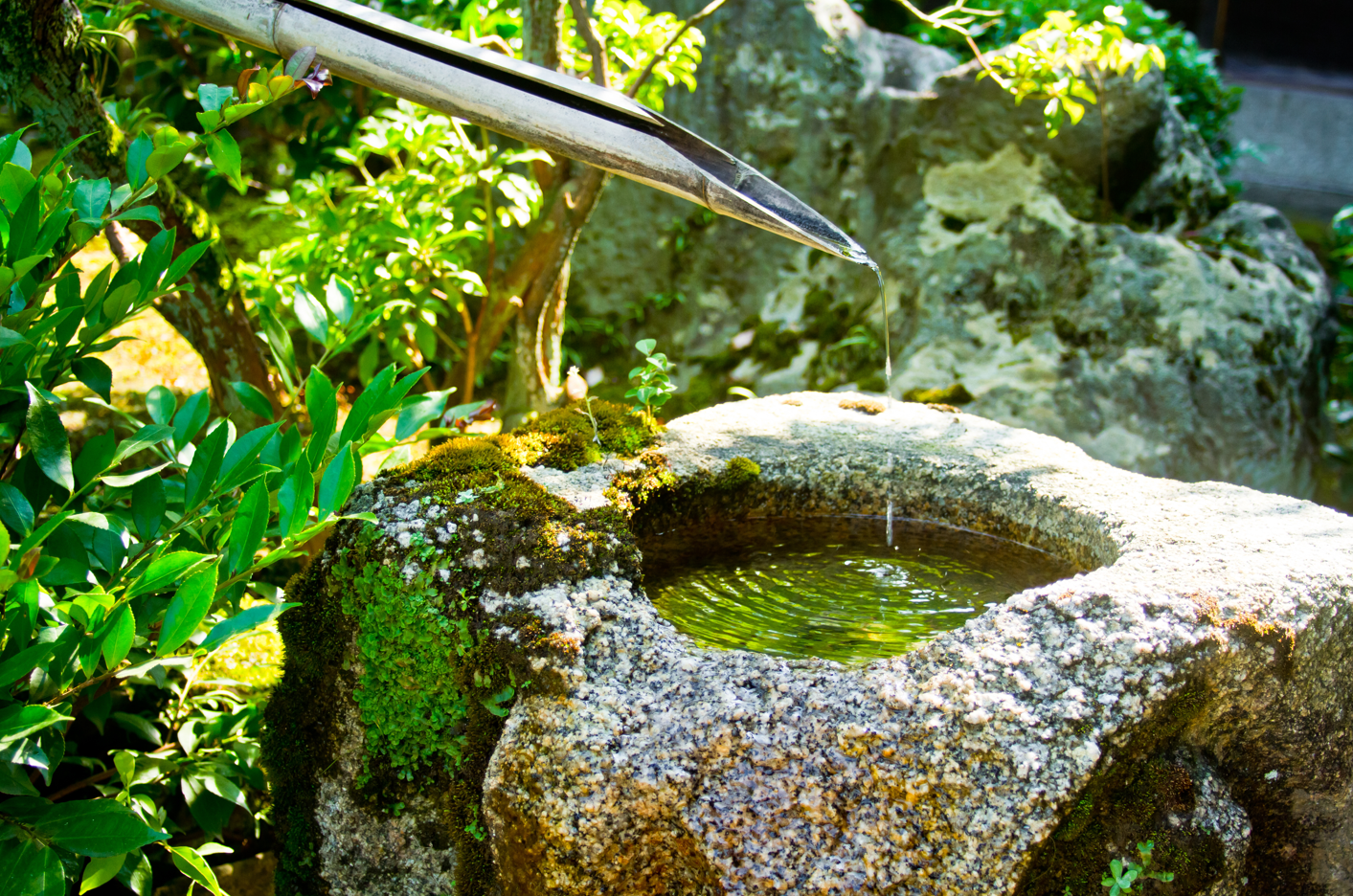
About Japanese Garden
When most people think of Japanese gardens, beautiful gardens in temples in Kyoto such as tranquil stone gardens or gardens coloured with red maple trees in Autumn are the ones that come to mind.
Japanese gardens in fact exist in various styles. It is difficult to describe Japanese gardens without understanding the cultural aspects and concepts.
Japanese Gardens: differences from Western Gardens
Traditional Japanese gardens reflect its history of philosophy, culture, and aesthetics.
Japanese gardens are characterized by the fact that it does not embody nature as it is, but symbolically abstracts it, as the basic concept of Japanese gardens is coexistence with nature to pay respect.
Western gardens focus on dominating and shaping nature by overcoming it with the power of humans. The design tends to be symmetrical, pursuing an artificial beauty that does not exist in nature.
Japanese gardens are artificially constructed to imitate natural landscapes such as mountains and rivers.
The biggest feature of Japanese gardens is that they incorporate natural elements such as stones and plants, and are designed to be asymmetrical with curvaceous shapes.

Western gardens are usually focused on colorful spring and summer flowers, while seasonal beauty is valued in Japanese gardens.
They use plants native to Japan— like cherry (sakura) trees, plum trees, pine trees, maple trees, moss, camellia, and azalea, but limited in number and leave plenty of open space.
They plant mainly evergreen trees such as pine trees, Ilex trees, and Japanese laurels. Some plants are chosen to bloom each season to reflect the scenery of the four seasons. Plum trees bloom white and pink flowers in early spring, azalea gives bright pink and white color in Spring, maple trees give bright red in Autumn, camellia gives red in winter. Evergreen trees even look magnificent covered in snow in winter.
Japanese gardens also contain many elements that have cultural significance such as rocks, gravels, and water, which will add a spiritual aspect to the gardens.
Rocks: represents mountains, a link between earth and heaven
Graves: represents the sea
Water: represents motherhood, and the origin of all life.

Japanese Residential Gardens
Japanese gardens can be created in different styles and in any scale from a huge park to a house garden.
The Japanese gardens have been developed by the aristocrats, temples, and feudal lords. It is only in the last 70 years gardens were created for the houses of ordinary Japanese.
Even though gardening has been the pastime of the aristocracy, the appreciation of plants and flowers became popular in Edo period (1603-1868) among the ordinary people, such as chrysanthemums, morning glories, and physalis.
Residential gardens have limited space, so some new styles of gardens have been developed.
As Japanese houses usually have walls surrounding them with entrance gates, front yards behind gates are created with stones and gravels with a symbolic tree like a big pine tree, and also internal courtyard gardens with gravels and rocks became popular, where the scenery can be enjoyed from inside the house.
Development of Japanese Gardening Tools
Japan has various unique gardening tools to take care of Japanese gardens, such as weeding sickles, scrapers and pruning shears and yard scythes. They are known for their quality and precision. They are especially known for sharp blades.

Japan has a long history of blacksmiths. Japanese blacksmiths have been producing Japanese swords (Katana) for centuries until 1876. Japanese swords are regarded as one of the finest sharp cutting weapons ever made.
During the Edo period, the number of swordsmiths decreased due to the continued peace of the time. As the role of blacksmiths became more specialized, many blacksmiths began to specialize in making iron products necessary for daily life.
Blacksmiths who mainly made farm tools were called "field blacksmiths" or "agricultural blacksmiths". They made a variety of iron products for daily use, such as plows, hoes, and sickles for farming, fishing equipment, and blades for use in the mountains as well as cooking knives.
These agricultural tools are the origin of the modern Japanese gardening tools which are known for their quality.
Summary
The concept of Japanese gardens is different from Western gardens.
An essential spirit of the Japanese garden remains an attempt to embody the essence of nature, recognising the seasonal changes and the transience of life.
The Japanese garden can be created to any scale, even in dense urban areas where you can have a place to find your inner peace in your busy city life.
In the next article, the types of Japanese gardening tools will be explained.